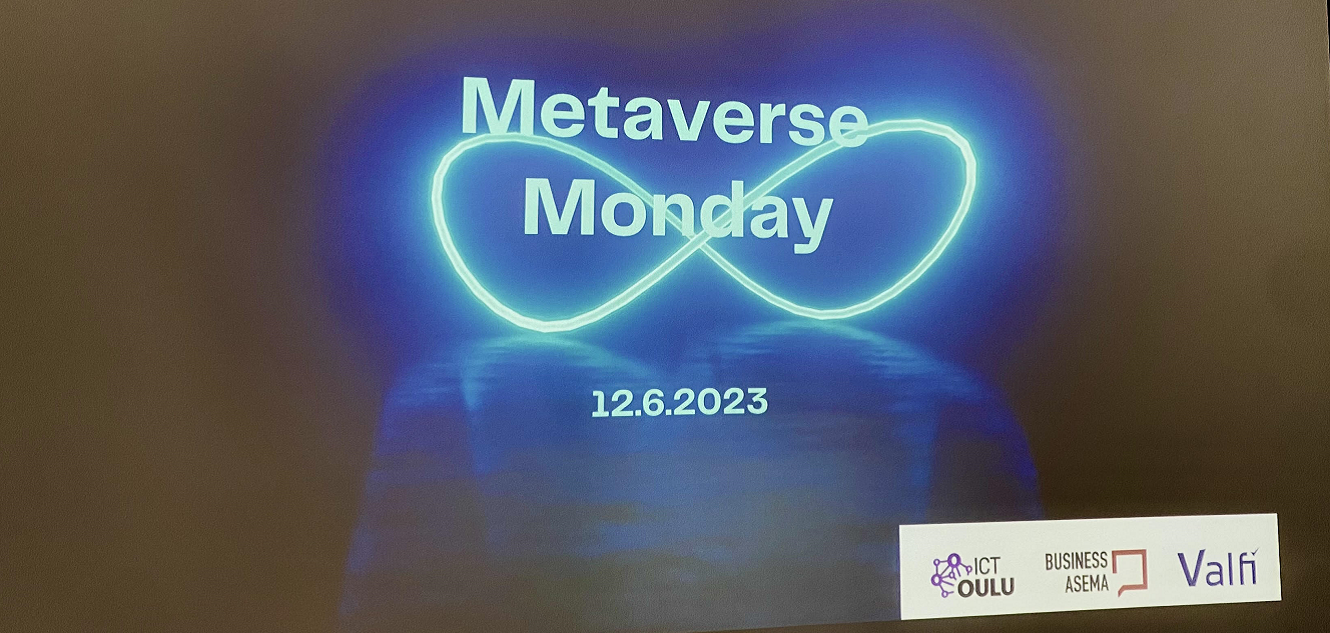On Monday 12th June, BusinessAsema’s Startup Station hosted Metaverse Monday. As awareness and experimentation continues with this new way of accessing the internet, this felt like a good opportunity to take stock of everything that’s happened so far and what the likely path forward is from local experts from Oulu’s ICT cluster. With the recent unveiling by Apple of their new Vision Pro product, the timing of this event couldn’t be more topical.
Here are some takeaways and talking points from the afternoon’s presentations.
Changing the narrative
An introduction was given by event host Valtteri Kujula from Valfi Oy. He referred to the fact that, through a combination of factors, the metaverse currently has a narrative problem. In the public domain, it is often misunderstood with people usually saying “it’s related to gaming” or “it’s all science fiction”.
With more brands like Gucci creating digital versions of their operations in the metaverse, as well as companies like Microsoft and Adobe enabling easy entry points within pre-existing products such as Teams and Creative Cloud, the general public perceptions of this topic are being subtly challenged. Software and solution developers should be looking to continue the work in reframing the narrative.
Finland’s metaverse ambitions
The first of our guest speakers was Jani Jokitalo, Senior Account Advisor from Business Finland, an organisation that has been supporting XR since at least 2015 with several reports on the topic. This specific of the area of the industry has been thriving for some times, with over 200 national firms offering standalone or extension products that utliise this technology. Business Finland has been proactive in helping national companies to, amongst other things, find overseas customers in this domain.
He also discussed a couple of wider initiatives that are being established to support the development of metaverse-based solutions. This year they have already unveiled the National Metaverse Strategy – the first of its kind anywhere in Europe. Additionally, they plan to launch the Immersive Digital Life mission, with the vision of Finland being a leading architect and enabler in this domain by 2035.
How we interact with new worlds
The afternoon’s talking points then shifted from a business perspective to academia. Matti Pouke from the University of Oulu works within its Perception Engineering team and has many years of research under his belt in the fields of VR and robotics.
He talked through a lot of the studies that he and his team have been undertaking, with a focus on projects that understand how a user feels when they immerse themselves into a virtual world. The responses and insights that participants shared were eye-opening and showcased the wide range of reactions that people have when accessing VR-enabled environments. All of this work is crucial in order to support the hardware and software development of solutions that provides minimal hassle when it comes to UX.
The human is key
After a break for coffee and networking, Peter Antoniac, CEO of Augumenta, drew from his ten years of knowledge with AR for a thought-provoking presentation. There were two key issues raised that really struck a chord with the audience.
People tend to forget that, for example, workers in factories may not have a huge understanding of how advanced technologies work. They are also individuals that are most likely to come across tools that are rooted in AR or VR, and they are often left behind. User accessibility and ease-of-use must be a key consideration in the planning and development of products.
He also looked ahead to the future of metaverse interfaces. As the digital world gets smarter, and API continues to become more harmonised, there is potential for groundbreaking development in this area.
The potential of the blockchain
The final speaker of the afternoon was Sandun Dasanayake, CEO of Q4US, who discussed some of the possibilities afforded by the blockchain. Like with the metaverse itself, it has a narrative problem based on the lack of public awareness of what it is and isn’t (e.g. some people think it’s the exact same thing as cryptocurrency) and the reported actions of bad actors in this field.
Sandun dispelled some of the myths surrounding the blockchain and outlined some of its key assets that can be a good fit with metaverse solutions. Namely, this could be a way to ensure that financial transactions conducted across the internet are considerably more secure. He also highlighted the paramount importance of data privacy, which is something that should be taken very seriously by developers.
